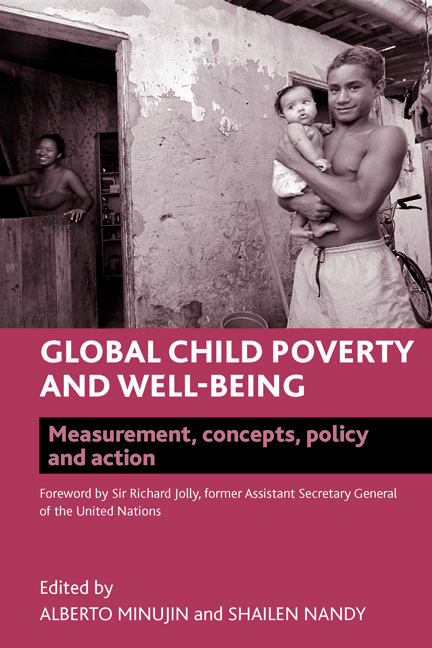four - Measuring child poverty and deprivation
Published online by Cambridge University Press: 07 September 2022
Summary
Introduction
Ten years ago, the United Nations Children's Fund (UNICEF) asked the Townsend Centre for International Poverty Research at the University of Bristol, UK, to produce a scientifically valid and reliable method for measuring the extent and depth of child poverty in all the developing regions of the world. The methodology had to be socially and culturally appropriate, age and gender-specific and allow for the fact that children's needs change as they grow and develop. The methodology also needed to be consistent with agreed international definitions of poverty used for policy-making purposes and within the framework provided by international human rights conventions, particularly the UN Convention on the Rights of the Child (UNCRC).
The resulting methodology to measure child poverty (sometimes referred to as the ‘Bristol’ Approach by UNICEF) was briefly described by Gordon et al (2003) and was subsequently adopted by UNICEF as a core child poverty measure for the Global Study on Child Poverty and Disparities.
The ‘Bristol Approach’ was designed to produce meaningful scientific comparisons of child poverty between countries and UNICEF regions. A purpose of this chapter is to show how this methodology can be adapted and applied to produce meaningful and appropriate child poverty analyses within countries. The chapter also clarifies some of the myths and misconceptions that have arisen about the ‘Bristol’ methodology.
This chapter first briefly describes the ‘Bristol’ methodology. This is followed by a discussion of the relative deprivation theory that underlies the methodology and introduces the requirements for scientific valid and reliable measurement. The following section on ‘How not to measure child poverty’ looks at the limitations of three other highly regarded methodologies:
• the World Bank's ‘dollar a day’ PPP (purchasing power parity) method
• the Wealth Index method
• Alkire and Foster's Multidimensional Poverty Index method.
The purpose of these critiques is not to revisit ‘old ground’ and repeat technical criticisms that are already well known. Instead, the section aims to look at the more profound theoretical problems with these prevalent methodologies that are more rarely discussed and understood.
- Type
- Chapter
- Information
- Global Child Poverty and Well-BeingMeasurement, Concepts, Policy and Action, pp. 57 - 102Publisher: Bristol University PressPrint publication year: 2012
- 4
- Cited by

